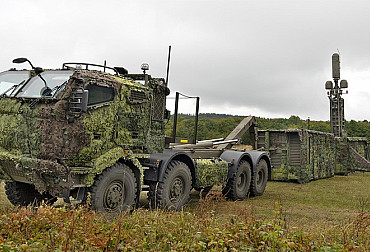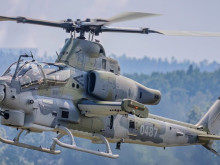Refuelling from the air will be more accessible
Six allied countries, including the Czech Republic, will join the Programme for the Operation of Airbus A-330-based tankers. Two machines are now completed and another six are waiting for their production. These are additional capacities that we can share following the allied transport programme SALIS. What does this mean for the Army of the Czech Republic in practice? New abilities, deepening the possibility of in-flight refuelling training and much more.

Picture: The new refuelling squadron should provide eight A-330 machines in total, which are specially designed for air refuelling, by 2024. | Wikimedia Commons
The new refuelling squadron should provide eight A-330 machines in total, which are specially designed for air refuelling, by 2024. Europe strongly misses these capacities and the American ones are usually used instead. Among other things, we can meet during the exercises when the National Guard of Nebraska or Texas and their aircraft technology provide the refuelling in the air. The first refuelling within the Czech airspace took place for the first time in 2013 with a German Air Force tanker of the Airbus 310 MRTT. “In the final phase of the connection, the pilot has to guide the aircraft so that it approaches the tank basket at the speed of about 5 km/h. If the connection is successful, the edge of the basket is about 30 cm from the canopy of the aircraft, which requires a lot of attention from the pilot,” said the Colonel Jana Růžičková to the topic of the beginnings of refuelling during the flight.
A fleet of flying tankers will be purchased by six European countries – Belgium, Germany, Norway, the Netherlands, Luxembourg and our country. The aircrafts will be purchased together, i.e. they will be also de facto owned by the Czech Republic. Funding and cost sharing will be paid by countries according to their share of flight hours. The Ministry of Defence already stated how much this common system would cost us. The participation in the project has cost a lump sum of 594 million Czech Korunas. Furthermore, the costs are 42 million Korunas per year in total, which covers the staff, but also the operation of the aircrafts themselves.

Picture: “In the final phase of the connection, the pilot has to guide the aircraft so that it approaches the refuelling basket at the speed of about 5 km/h. If the connection is successful, the edge of the basket is about 30 cm from the canopy, which requires a lot of attention from the pilot,” said the Colonel Jana Růžičková to the topic of the beginnings of refuelling during the flight | Capt. Tomáš Maruščák / army.cz
A thirty-year cycle has been planned. The operation will cost the Czech Republic approximately 1.9 billion Czech Korunas during the time. Apart from funding, our crews will be also involved. These will probably be the pilots from the Air Force Base in Kbely in Prague. Our soldiers have already formed the crew, for example, at the fleet of Airborne Warning and Command System (AWACS).
And what shall we receive for 42 million a year? One hundred flight hours of tankers. Germany will receive 5,500 hours, the Netherlands 2,000 hours, Belgium 1,000, Luxembourg 200 and Norway, as well as the Czech Republic, will receive 100 hours. Let´s compare us with Norway (as Norway has the same number of hours available). Norway has a total of 56 F-16 Fighting Falcon Fighters and operates four F-35 Lightning II. In contrast, the Czech Republic has fourteen JAS-39 Gripen machines.





















